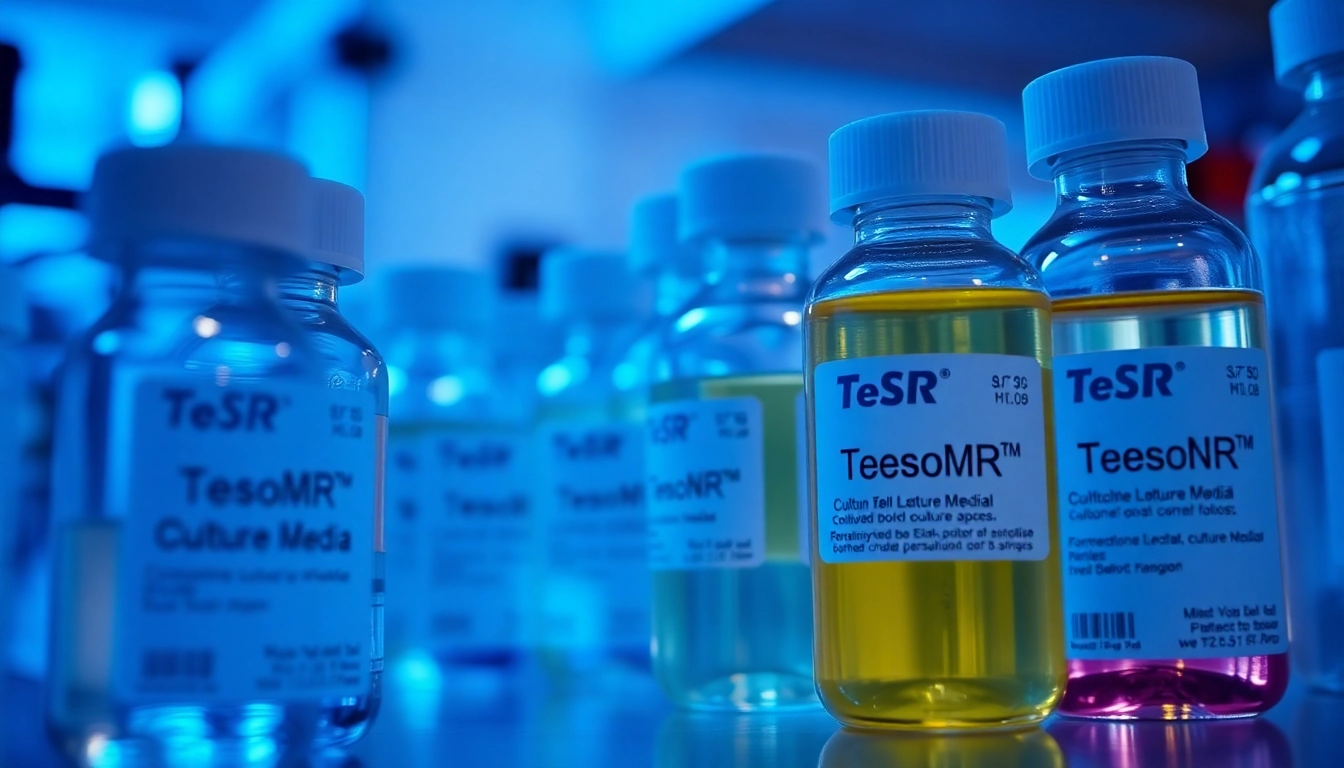Understanding Feeder-Free Pluripotent Stem Cell Culture
Pluripotent stem cells (PSCs) hold an incredible potential in regenerative medicine, cell therapy, and drug discovery. Their ability to differentiate into any cell type in the human body is invaluable, making them critical for advancements in various biomedical fields. Among the tools that have significantly advanced the study and application of PSCs, TeSR™ feeder-free media stand out. These media provide an optimized environment for the reprogramming, maintenance, and differentiation of human embryonic stem (ES) and induced pluripotent stem (iPS) cells. For those looking for high-quality media for stem cell research, all check options available in the TeSR™ product line could be exactly what you need.
What is Pluripotent Stem Cell Culture?
Pluripotent stem cell culture refers to the process of growing and maintaining stem cells that can differentiate into any cell type. These cells can be derived from embryos (embryonic stem cells) or generated from adult somatic cells through reprogramming (induced pluripotent stem cells). The culture environment, including the media used, significantly influences the viability and potential of these stem cells. Traditional methods often involved feeder layers made of other cells to supply growth factors, which sometimes introduced variability and contamination risks. Feeder-free media like TeSR™ eliminate these issues while offering a controlled environment conducive to stem cell growth and maintenance.
Benefits of Feeder-Free Conditions
Feeder-free culture conditions provide several advantages over traditional methods:
- Reduced Contamination Risk: Without feeder cells, the chances of microbial contamination are significantly lower, ensuring a cleaner and more reliable culture.
- Cost-Effectiveness: Feeder layers require regular maintenance and can be expensive to prepare and maintain. Feeder-free media streamline this process.
- Consistency and Reproducibility: Feeder-free media allow for more consistent growth conditions, enabling reproducible experimental outcomes.
Overview of TeSR™ Media Options
The TeSR™ family offers a wide range of feeder-free media designed for specific applications in stem cell research. This line includes:
- mTeSR™1: A widely used maintenance medium known for its efficient support of hPSC growth.
- mTeSR™ Plus: An enhanced formulation that offers improved pH stability, allowing for longer intervals between media changes.
- TeSR™-AOF: Designed to be free from animal or human components, ensuring higher purity and reliability.
- TeSR™-E8™: A simplified medium that includes only the most essential components for hPSC maintenance.
- ReproTeSR™: Tailored for the reprogramming of fibroblasts and other somatic cells.
Key Features of TeSR™ Media
Batch Consistency and Reproducibility
TeSR™ media are produced with rigorously pre-screened materials, ensuring batch-to-batch consistency and experimental reproducibility. This high level of quality control is crucial for researchers who rely on consistent data in their experiments.
Enhanced Formulation Benefits
Applications in hPSC Research
TeSR™ media are utilized in various applications, including:
- Embryonic Stem Cell (ESC) Maintenance: Keeping ESCs in an undifferentiated state for research and therapeutic applications.
- Induced Pluripotent Stem Cell (iPSC) Reprogramming: Facilitating the conversion of somatic cells back into pluripotent stem cells.
- Cell Differentiation Studies: Supporting the controlled differentiation of hPSCs into desired cell types.
- Cryopreservation: Providing optimal conditions for storing hPSCs without compromising viability.
Comparative Analysis with Competitor Products
TeSR™ vs. Other Media: A Head-to-Head
With numerous alternatives on the market, a comparative analysis of TeSR™ media with competitor products highlights several advantages:
- Reproducibility: Unlike many competitor products, which may vary significantly in formulation, TeSR™ media are designed for consistent performance, reducing variability in stem cell behavior.
- Ease of Use: TeSR™ media simplify the maintenance process, allowing researchers to focus on their experiments rather than laborious maintenance protocols.
- Extensive Validation: TeSR™ media have undergone extensive peer-reviewed validation, ensuring confidence in their efficacy and safety.
Unique Selling Points of TeSR™
The unique selling points of TeSR™ media include:
- cGMP Compliance: Products like mTeSR™ Plus are manufactured under current Good Manufacturing Practices, essential for applications moving toward clinical relevance.
- Animal Origin-Free Options: The TeSR™-AOF formulation caters to the increasing demand for animal product-free research tools.
- Comprehensive Support: With extensive documentation and scientific literature backing their use, researchers have access to a wealth of information.
User Testimonials and Case Studies
Numerous case studies and testimonials from research laboratories demonstrate the effectiveness of TeSR™ media in a wide array of applications. For instance, laboratories converting to mTeSR™1 reported enhanced cell growth rates and better results in differentiation assays. Experiments that employed mTeSR™ Plus noted a decrease in media change frequency, leading to more stable culture conditions.
Best Practices for Using TeSR™ Culture Media
Tips for Optimizing hPSC Growth
To maximize the benefits of TeSR™ media, researchers should consider the following tips:
- Routine Monitoring: Regular assessment of cell morphology and viability will help catch potential issues early.
- Appropriate Passaging: Timely passaging is crucial for preventing over-confluence and maintaining cell health.
- Consistent Environmental Conditions: Ensure that temperature, humidity, and CO2 levels are maintained at optimal levels consistent with recommended protocols.
Common Challenges and Solutions
Researchers may encounter several challenges while using TeSR™ media. Some common challenges include:
- Cell Contamination: Implement robust aseptic techniques to minimize contamination risks.
- Medium Acidification: Utilizing mTeSR™ Plus helps mitigate this issue with its enhanced pH buffering.
- Inconsistent Cell Behavior: Focus on the importance of consistent environmental controls to mitigate variability in cell responses.
Maintaining Quality Control in Cultures
Quality control is crucial when working with hPSCs. Researchers should maintain detailed records of culture conditions, passage numbers, and origin of cell lines. Regularly testing for the presence of mycoplasma and other contaminants will further ensure the integrity of the cultures.
Future Trends in Pluripotent Stem Cell Research
Innovations in Stem Cell Technologies
The field of pluripotent stem cell research is rapidly evolving, with new techniques emerging that promise to enhance the efficiency of stem cell differentiation and application. Innovations such as bioreactor systems and automated culture methods are on the rise, allowing for a more streamlined and scalable approach to stem cell research.
Insights from Recent Studies
Recent studies have highlighted the importance of precise control over the differentiation conditions, showcasing how specific growth factors in TeSR™ media can be fine-tuned to influence stem cell fate.
Predictions for the Future of hPSC Culture
The future of hPSC culture is likely to involve greater integration of technology in cell culture practices, including artificial intelligence and machine learning to predict growth patterns and refinements. As techniques continue to develop, the reliance on standardized, reliable media like TeSR™ will be paramount.



